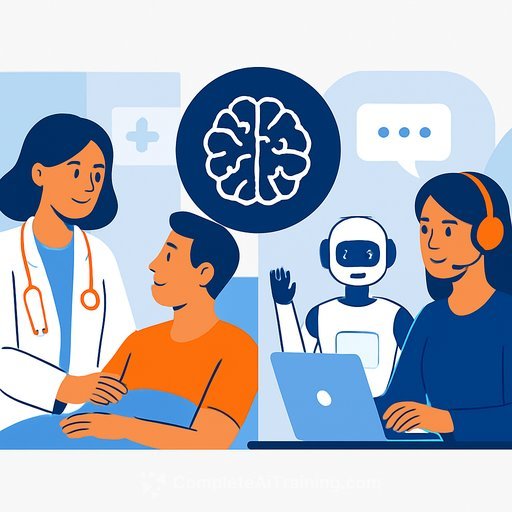Utah Health AI Center Joins Coalition for Advancing Safer Healthcare
Preventable harm is still a major drain on outcomes, trust, and budgets. Fewer surgical complications and infections would mean safer care and billions saved.
The University of Utah Center for Evaluation of Health AI Research (UCHAI) has joined a nationwide effort to address this head-on. As one of four members of the Coalition for Advancing Safer Healthcare (CASH), UCHAI will study how direct-to-consumer technology can help patients play an active role in safer care.
What the coalition is doing
UCHAI's remit within CASH is clear: identify practical ways patients can use AI to make their own care safer-and distill those into five national recommendations. The goal is to improve safety across the full continuum of care, from clinic visits to post-discharge follow-up.
"UCHAI's role in the CASH project will be to give five national recommendations on how patients can use AI to improve the safety of their own care," says David Classen, MD, professor of epidemiology at University of Utah Health and leader of U of U Health's CASH working group. "These recommendations will be used to dramatically improve safety across the continuum of care."
Why this matters for health systems
Patient-facing AI tools are already influencing decisions outside the hospital walls-medication reminders, symptom triage, care navigation, and recovery monitoring. If integrated safely, these tools can reduce missed follow-ups, medication errors, and delays in escalation.
UCHAI's ongoing research focuses on three areas that matter to frontline teams: making electronic health records safer and more effective, detecting and predicting adverse events, and developing validated electronic safety measures. That evidence base can help leaders move from pilots to measurable, repeatable outcomes.
Practical steps you can act on now
- Map your patient-facing tech: Identify all apps, portals, and chatbots patients use, and assess their safety implications (alerts, accuracy, escalation paths).
- Clarify integration with the EHR: Define how patient-generated data flows into clinical workflows without adding noise or risk.
- Set safety metrics upfront: Use electronic safety measures to track signals like near-misses, time to follow-up, and readmissions tied to digital touchpoints.
- Build patient guidance: Offer simple, clear instructions on appropriate use, limitations, and when to seek urgent care.
- Establish governance: Include clinical, human factors, and informatics experts to review AI features, bias risks, and model updates.
- Pilot, then scale: Start with a high-impact pathway (e.g., perioperative care, heart failure, diabetes) and measure outcomes before expansion.
- Close the loop: Create feedback channels for patients and clinicians to flag inaccuracies or safety concerns in real time.
Who's in the coalition
- University of Utah Center for Evaluation of Health AI Research (UCHAI): Leading patient-facing AI safety recommendations.
- Johns Hopkins Medicine Armstrong Institute for Patient Safety and Quality: Large-scale health systems technology.
- MedStar Health National Center for Human Factors in Healthcare: Human factors and usability in clinical environments.
- UC San Diego Health Joan & Irwin Jacobs Center for Health Innovation: Data use to improve patient safety.
Context and next moves
For teams standardizing their safety playbook, AHRQ's patient safety resources remain a helpful baseline for measurement and governance frameworks. See AHRQ's overview of patient safety tools and research for further reference.
Upskilling your workforce
If your organization is building AI fluency across roles-clinical, quality, and operations-consider structured learning paths that connect use cases to measurable safety outcomes.
AI courses by job role - Complete AI Training
The CASH initiative signals a practical shift: put safe, patient-facing AI to work where it counts, measure it, and scale what proves effective. As UCHAI and partners publish their recommendations, health systems can align governance, data flows, and frontline workflows to be ready on day one.
Your membership also unlocks:






